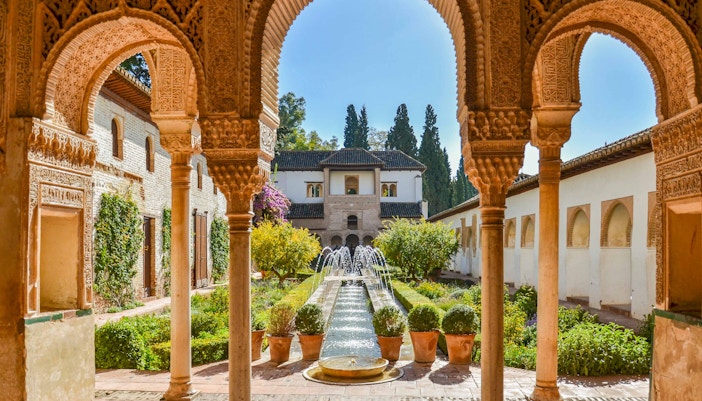The Puerta de la Justicia (Gate of Justice), a sizable gate that functioned as the primary entry on the south side of the walled complex and was constructed in 1348 during the rule of Yusuf I, is the main gate of the Alhambra. The gate is made of a big horseshoe-shaped archway that leads to a steep ramp that curves into a narrow corridor. On the exterior of this gate, a carving of a hand with five fingers represents the Five Pillars of Islam, while on the interior, a carving of a key represents another symbol of faith in the same location. Later, a sculpture of the Virgin and the Christ Child from the Christian era was placed in another niche right within the gate.
Top Things To See Inside Alhambra
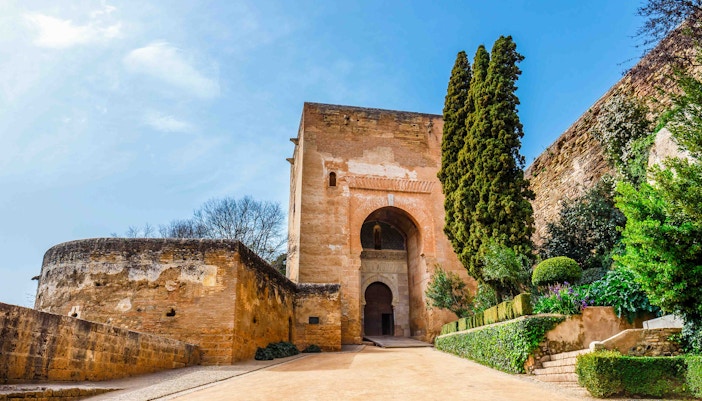
Puerta de la Justicia
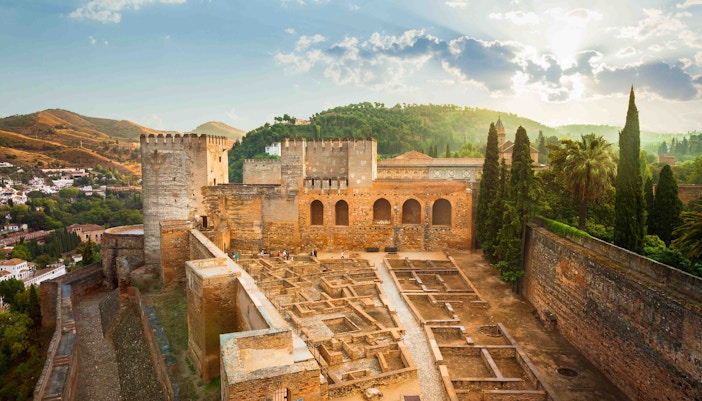
Alcazaba
The oldest portion of Alhambra today is the Alcazaba or citadel. It served as the focal point of the intricate network of defenses that guarded the territory. The Torre del Homenaje, the complex's tallest tower at 26 meters, served as the keep and military command center. It might have also served as Ibn al-initial Ahmar's home while the Alhambra was still under construction. The 25-meter-tall Torre de la Vela, the westernmost tower, served as a watchtower. Later, a bell was added to the tower, and it was rung regularly every day and on significant occasions for hundreds of years. The building was added to the city's coat of arms in 1843.
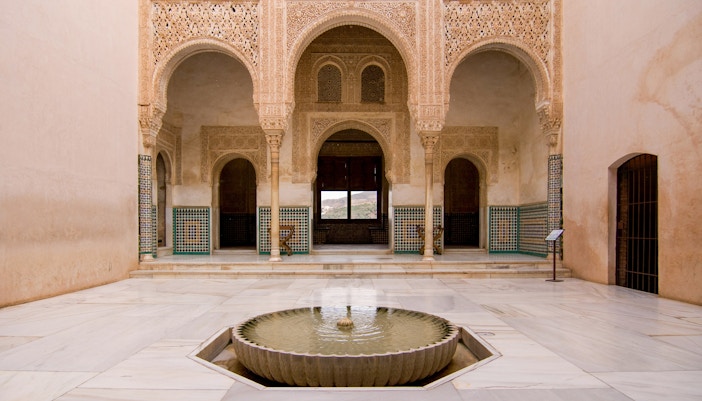
Mexuar
The westernmost area of the royal complex is called the Mexuar. It was comparable to the Mashwars (or Mechouars) of North African royal palaces. It was first constructed as a part of the bigger complex that Isma'il I started, which also included the Comares Palace. Many of the palace's administrative and more visible operations, including the chancery and treasury, were situated there. Its design had two parallel courtyards followed by a great hall, all of which were arranged along a central axis that ran from west to east. The foundations of the Mexuar's two western courtyards, a portico, and a fountain's water basin are all that is left today.
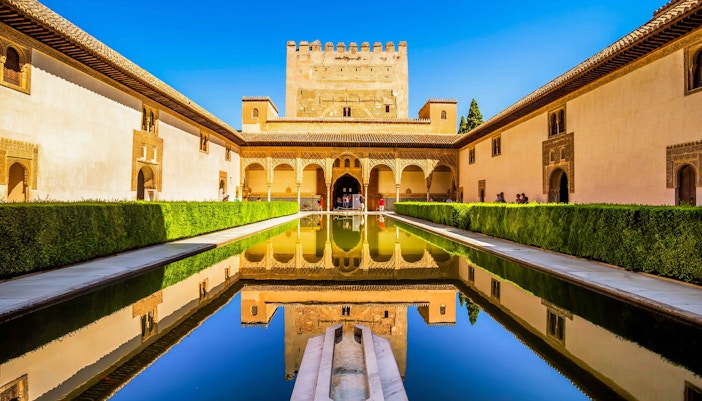
The Comares Palace
The Comares Palace served as the focal point of a sizable palace complex that was started by Isma'il I in the early 13th century and expanded upon and renovated by Yusuf I and Muhammad V later that same century. The Qar al-Sultan or Dr al-Mulk, also known as the new palace complex, served as the formal residence of the sultan and the state. The Mexuar provided access to the Comares Palace from the west. At the eastern end of the Mexuar, on the south side of the Patio de Cuarto Dorado, is an interior façade known as the Comares Façade. The entry to the palace was this elaborately decorated symmetrical façade with two doors, which almost certainly performed certain ceremonial duties.
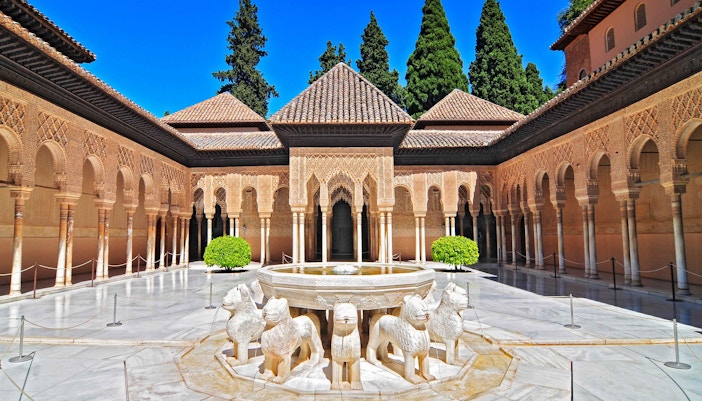
Palace of the Lions
One of the most well-known palaces in Islamic architecture, the Palace of the Lions represents the pinnacle of Nasrid design during the rule of Muhammad V. The courtyard's long axis is roughly aligned east to west, measuring around 28.7 meters long and 15.6 meters broad. The surrounding portico's arches and columns are placed in a sophisticated arrangement that alternates groups of two or three columns with single columns, a feature that was exclusive to Islamic architecture. The famous Fountain of the Lions is located in the middle of the courtyard, which also has two elaborate pavilions on its east and west sides. The fountain is made up of a sizable basin that is surrounded by twelve marble statues of stylized lions.
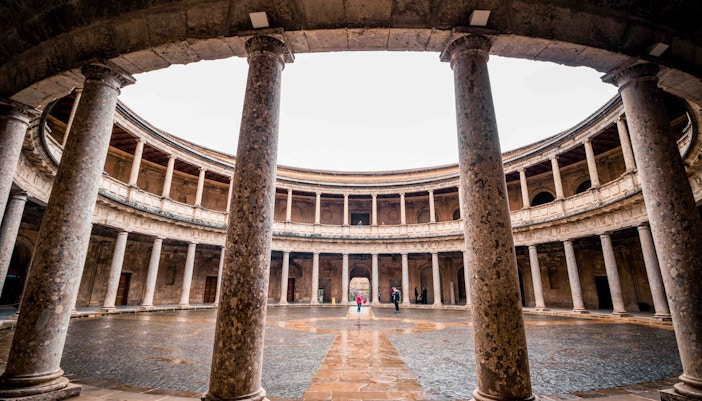
Palace of Charles V
Pedro Machuca, an architect who studied under Michelangelo in Rome and was well-versed in the traditions of the Italian High Renaissance and the artistic communities of Raphael and Giulio Romano, created the palace that Charles V had commissioned in the center of the Alhambra. It was created with an original design that reflected the architectural ideals of the time in a modern Renaissance or "Roman" style. It comprises a huge stone building that is square in shape and completely encloses a courtyard. Rustication and pilasters alternate with other decorations above to create two horizontal zones of decoration on the outside façade.

